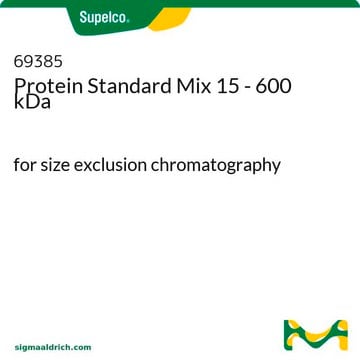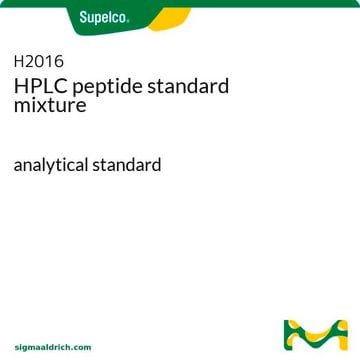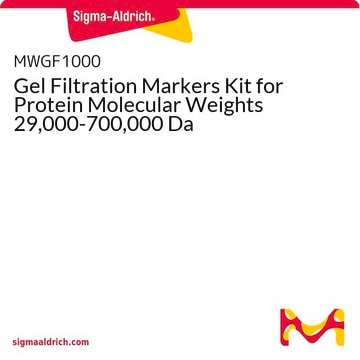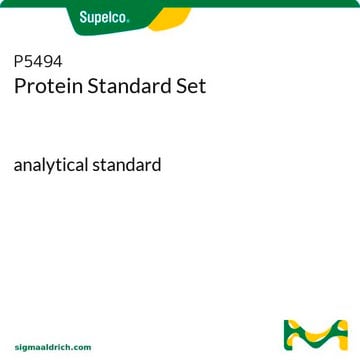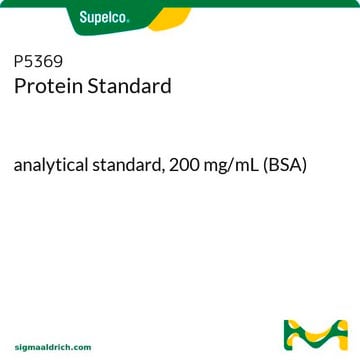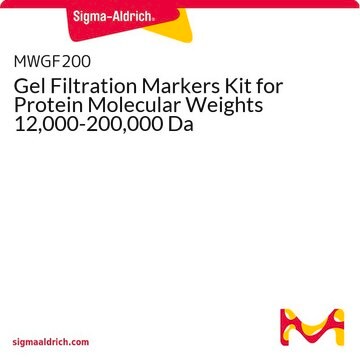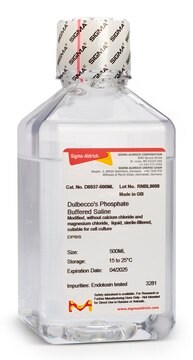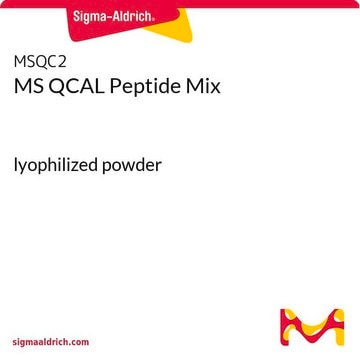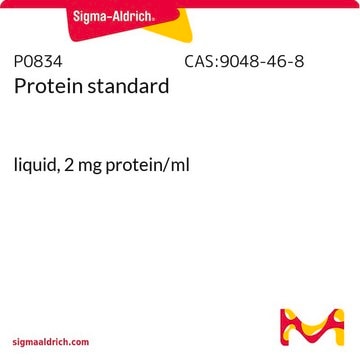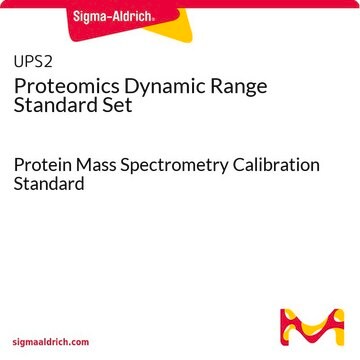Products may be shipped at a different temperature than the recommended long-term storage temperature. If the product quality is sensitive to short-term exposure to conditions other than the recommended long-term storage, it will be shipped on wet or dry-ice. If the product quality is NOT affected by short-term exposure to conditions other than the recommended long-term storage, it will be shipped at ambient temperature. As shipping routes are configured for minimum transit times, shipping at ambient temperature helps control shipping costs for our customers. For more information, please refer to the Storage and Transport Conditions document: https://www.sigmaaldrich.com/deepweb/assets/sigmaaldrich/marketing/global/documents/316/622/storage-transport-conditions-mk.pdf
H2899
HPLC protein standard mixture
analytical standard
Sinónimos:
Protein Calibration Mix
Seleccione un Tamaño
Seleccione un Tamaño
About This Item
Productos recomendados
grado
analytical standard
Nivel de calidad
Formulario
solid
clases químicas de analitos
amino acids, peptides, proteins
técnicas
HPLC: suitable
aplicaciones
food and beverages
Formato
multi-component solution
temp. de almacenamiento
−20°C
Categorías relacionadas
Aplicación
Envase
Aplicación
Palabra de señalización
Danger
Frases de peligro
Consejos de prudencia
Clasificaciones de peligro
Resp. Sens. 1
Código de clase de almacenamiento
11 - Combustible Solids
Clase de riesgo para el agua (WGK)
WGK 3
Equipo de protección personal
Eyeshields, Gloves, type N95 (US)
Elija entre una de las versiones más recientes:
Certificados de análisis (COA)
¿No ve la versión correcta?
Si necesita una versión concreta, puede buscar un certificado específico por el número de lote.
¿Ya tiene este producto?
Encuentre la documentación para los productos que ha comprado recientemente en la Biblioteca de documentos.
Los clientes también vieron
-
How is shipping temperature determined? And how is it related to the product storage temperature?
1 answer-
Helpful?
-
-
How can I determine the shelf life / expiration / retest date of this product?
1 answer-
If this product has an expiration or retest date, it will be shown on the Certificate of Analysis (COA, CofA). If there is no retest or expiration date listed on the product's COA, we do not have suitable stability data to determine a shelf life. For these products, the only date on the COA will be the release date; a retest, expiration, or use-by-date will not be displayed.
For all products, we recommend handling per defined conditions as printed in our product literature and website product descriptions. We recommend that products should be routinely inspected by customers to ensure they perform as expected.
For products without retest or expiration dates, our standard warranty of 1 year from the date of shipment is applicable.
For more information, please refer to the Product Dating Information document: https://www.sigmaaldrich.com/deepweb/assets/sigmaaldrich/marketing/global/documents/449/386/product-dating-information-mk.pdfHelpful?
-
-
Could you provide an order of retention times of when each of these components elute off a protein C4 column (H2899 protein mixture)? Thank you.
1 answer-
The exact method is considered proprietary. However, for a C4 column, it should elute ribonuclease A first, followed by cytochrome C, holo-transferrin, and apomyoglobin.
Helpful?
-
-
What is each componant's actual molecular weight (ribonuclease A, cytochrome c, holo-transferrin and apomyoglobin)?
1 answer-
The molecular weight of each component is not reported. See below for the expected values:
Ribonuclease A: approx. 13.7 kDa
Cytochrome C: approx. 12.3 kDa
holo-Transferrin: 72.1 - 78.5 kDa
Myoglobin: approx. 17.6 kDaHelpful?
-
Active Filters
Nuestro equipo de científicos tiene experiencia en todas las áreas de investigación: Ciencias de la vida, Ciencia de los materiales, Síntesis química, Cromatografía, Analítica y muchas otras.
Póngase en contacto con el Servicio técnico